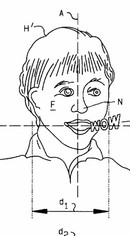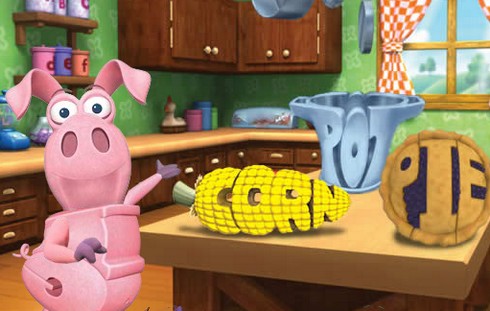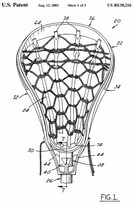By Jason Rantanen
Uniloc USA, Inc. v. Microsoft Corp. (Fed. Cir. 2011)
Panel: Rader, Linn (author), Moore
Uniloc v. Microsoft involves a host of issues, although one stands out as particularly noteworthy. While "passively tolerat[ing]" the 25 percent 'rule of thumb' (a method for calculating a reasonable royalty for purposes of infringement damages) in past cases, the CAFC held today that the rule "is a fundamentally flawed tool for determining a baseline royalty rate in a hypothetical negotiation," thus precluding its use for damages calculations.
Uniloc is the owner of Patent No. 5,490,216, an early patent covering a mechanism for combating "casual copying" of software, where users install copies of a software program on multiple computers in violation of applicable software licenses. In general terms, the patented invention involves the creation of a registration number generated by the software on the user's computer. The number is sent to the vendor's system, which uses an identical algorithm to create a remote license ID. If the numbers match when the application boots, the program enters a "use mode;" if they do not, it enters a "demo mode."
In the suit against Microsoft, Uniloc alleged that the Product Activation feature for Microsoft's Word XP, Word 2003, and Windows XP software programs infringed the '216 patent. A jury agreed, finding that Microsoft not only infringed the patent, but did so willfully. The jury also rejected Microsoft's invalidity defenses and awarded Uniloc $388 million in damages. Following the trial, the district court granted Microsoft's motion for JMOL of noninfringement and lack of willfulness (and in the alternative, ordered a new trial on these issues), but denied its request for a JMOL on invalidity. The court also ordered a new trial on the issue of damages. On appeal, Uniloc challenged the district court's noninfringement, willfulness, and damages rulings, while Microsoft cross-appealed the denial of its JMOL on invalidity. The Federal Circuit affirmed the district judge's rulings on willfulness, damages and invalidity, but reversed on the question of infringement, both with respect to JMOL and the grant of a new trial.
Damages
The damages section of the opinion is by far the most significant portion. At trial, the jury awarded Uniloc $388 million in damages, relying on the testimony of Uniloc's expert, who opined that damages should be $564,946,803 based on a hypothetical negotiation between Uniloc and Microsoft and the Georgia-Pacific factors. Using an internal Microsoft document relating to the value of product keys, the expert applied the 25 percent "rule of thumb" to the minimum value reported ($10 each), obtaining a value of $2.50 per key. After applying the Georgia-Pacific factors, which he concluded did not modify the base rate, he multiplied it by the number of new licenses to Office and Windows products, producing the $565 million value. He confirmed his valuation by "checking" it against the total market value of sales of the Microsoft products (approximately $19 billion, noting that it represented only 2.9% of the gross revenue of the products.
The 25 Percent Rule: On appeal, the CAFC first rejected the use of the 25 percent rule to calculate patent damages. "The 25 percent rule of thumb is a tool that has been used to approximate the reasonable royalty rate that the manufacturer of a patented product would be willing to offer to pay to the patentee during a hypothetical negotiation." Slip Op. at 36, citing Robert Goldscheider, John Jarosz and Carla Mulhern, USE OF THE 25 PER CENT RULE IN VALUING IP, 37 les Nouvelles 123, 123 (Dec. 2002). Under the rule, "licensees pay a royalty rate equivalent to 25 per cent of its expected profits for the product that incorporates the IP at issue." Id., quoting Goldscheider et al. Included in the court's discussion of the rule is an extensive survey of the relevant literature (covering no less than nine articles), as well as an acknowledgement that the "court has passively tolerated its use where its acceptability has not been the focus of the case." Slip Op. at 39. However, the court recognized that it never squarely addressed the use of the rule.
Treating the issue as one of first principles, and after considering the relevant Supreme Court caselaw, the CAFC concluded that, as an abstract theory untied to particular factual circumstances of a given case, the 25 percent rule simply cannot be used for damages calculations:
This court now holds as a matter of Federal Circuit law that the 25 percent rule of thumb is a fundamentally flawed tool for determining a baseline royalty rate in a hypothetical negotiation. Evidence relying on the 25 percent rule of thumb is thus inadmissible under Daubert and the Federal Rules of Evidence, because it fails to tie a reasonable royalty base to the facts of the case at issue.
Slip Op. at 41. The court based its reasoning on the Daubert standard for expert testimony, concluding that general theories are only permissible if the expert adequately ties the theory to the specific facts of the case. Under Kumho Tire Co. v. Carmichael, 526 U.S. 137 (1999) and General Electric Co. v. Joiner, 522 US 136 (1997), "one major determinant of whether an expert should be excluded under Daubert is whether he has justified the application of a general theory to the facts of the case." Slip Op. at 43.
Applying this principle, the CAFC criticized the application of the 25 percent rule because there was no link between the rule and the specific case:
The meaning of these cases is clear: there must be a basis in fact to associate the royalty rates used in prior licenses to the particular hypothetical negotiation at issue in the case. The 25 percent rule of thumb as an abstract and largely theoretical construct fails to satisfy this fundamental requirement. The rule does not say anything about a particular hypothetical negotiation or reasonable royalty involving any particular technology, industry, or party.
Slip Op. at 45. In addition, the court pointed to the lack of testimony by Uniloc's expert suggesting that the starting point of a 25 percent royalty had any relation to the facts of the case, and thus the use of the rule was "arbitrary, unreliable, and irrelevant," failing to pass muster under Daubert and tainting the jury's damages calculation. Id. at 47.
Entire Market Value Rule: The CAFC also rejected the expert's application of the entire market value rule, which he used as a check on the total damages. "The entire market value rule allows a patentee to assess damages based on the entire market value of the accused product only where the patented feature creates the 'basis for customer demand' or 'substantially create[s] the value of the component parts.'" Slip Op. at 48. Here, however, there was no evidence that the patented component created the basis for customer demand, as required by the rule: "This case provides a good example of the danger of admitting consideration of the entire market value of the accused where the patented component does not create the basis for customer demand." Slip Op. at 51.
Infringement
In opposing Uniloc's challenge on the issue of infringement, Microsoft argued that several grounds supported affirmance of the district court's grant of JMOL of noninfringement. The CAFC rejected each argument in turn, concluding that substantial evidence supported the jury's finding of infringement.
Standard of Review: One issue that sophisticated parties often dispute is the relevant standard that applies when reviewing jury verdicts. This appeal was no different – Microsoft contended that the jury verdict should be reviewed de novo, while Uniloc argued that it should be reviewed for substantial evidence. The CAFC responded by distinguishing situations where "the parties conceded that under one claim construction there was infringement and under the other there was none, and were arguing only over which claim construction was appropriate." Slip Op. at 15. In these cases, de novo review applies. On the other hand, where "the claim construction itself is not contested, but the application of that claim construction to the accused device is," the court applies the substantial evidence standard. Id.
Comment: This distinction reinforces a basic principle of Federal Circuit appellate practice: Parties challenging a jury verdict on the issue of infringement will likely want to frame the dispute on appeal as a question of claim construction; parties defending the verdict will likely want to frame it as a question of application of an accepted construction to the accused product or method. Of course, whether a party will be able to frame the question in a particular way depends largely on how the issue was set up in the district court – which itself is ideally part of counsel's long term strategic thinking.
Applying this standard, the Federal Circuit concluded that the jury's verdict of infringement was supported by substantial evidence, rejecting Microsoft's arguments to the contrary. The court also rejected Microsoft's argument that a critical "means-plus-function" limitation should be read narrowly. To the contrary, the court held, it should be read broadly, applying language from IMS Tech., Inc. v. Haas Automation, Inc., 206 F.3d 1422, 1436 (Fed. Cir. 2000) stating that "when in a claimed 'means' limitation the disclosed physical structure is of little or no importance to the claimed invention, there may be a broader range of equivalent structures than if the physical characteristics of the structure are critical in performing the claimed function."
Expert Testimony, redux: Also of note is the court's ruling with respect to expert testimony as it pertains to infringment. Although the district court rejected the testimony of Uniloc's expert as "incomplete, oversimplified and frankly inappropriate," the CAFC concluded that this rejection was improper because the district court had already fulfilled its gatekeeping function under Daubert when it explicitly noted that the expert was "qualified." Thus, it was up to the jury "to evaluate the weight to be given to the testimony of dueling qualified experts." This application of Daubert seems to be somewhat in tension with the court's treatment of expert testimony in the damages context, which focused on the content of the testimony, not the qualifications of the person giving it.
Joint Infringement: The CAFC also rejected Microsoft's joint infringement argument. Rather than implicating joint conduct, the court ruled, Uniloc's claim was structured so as to capture infringement by a single party by focusing on one entity. "That other parties are necessary to complete the environment in which the claimed element functions does not necessarily divide the infringement between the necessary parties. For example, a claim that reads “An algorithm incorporating means for receiving e-mails” may require two parties to function, but could nevertheless be infringed by the single party who uses an algorithm that receives e-mails." Slip Op. at 29.
Willful Infringement: On the issue of willfulness, the CAFC continued to apply its objective super-threshold for proving willfulness. "If the accused infringer's position is susceptible to a reasonable conclusion of no infringement, the first prong of Seagate cannot be met." Slip Op. at 32. Particularly obtuse is the court's triple-negative articulation of the factual holding: "Uniloc has not presented any evidence at trial or on appeal showing why Microsoft, at the time it began infringement, could not have reasonably determined that [Microsoft's algorithms] did not meet the “licensee unique ID generating means,” “licensee unique ID,” or “registration system”/“mode switching means” limitations."
Presumption of Validity: in addressing Microsoft's cross-appeal of the denial of its motion for JMOL and a new trial on invalidity, the court declined to back away from the "clear and convincing" standard for invalidity. Rejecting Microsoft's argument that its burden was to show invalidity simply by a preponderance of the evidence – as opposed to clear and convincing evidence – because the prior art reference was not before the PTO, the court continued to apply the higher standard. "Until changed by the Supreme Court or this court sitting en ban, this is still the law." Slip Op. at 55. Applying this standard, the court rejected Microsoft's argument that it was simply practicing the prior art, and thus a finding of infringement necessitated a finding of invalidity.


 Warrior Sports makes lacrosse equipment and hired John Artz's firm to handle patent prosecution. Artz later merged his firm with Dickinson Wright and brought his clients into the crease. One case that Artz worked-on was Reissue No. 38,216. In that case, the Artz firm failed to pay the maintenance fee — allowing the patent to lapse. In their petition for revival, Artz explained that the docketing clerk charged with paying the fee had suddenly died of an unexplained brain infection and that she had been suffering from the malady during the time that the fee was due. Unfortunately, the clerk had kept her illness secret and the firm learned only later that the condition had impacted her performance.
Warrior Sports makes lacrosse equipment and hired John Artz's firm to handle patent prosecution. Artz later merged his firm with Dickinson Wright and brought his clients into the crease. One case that Artz worked-on was Reissue No. 38,216. In that case, the Artz firm failed to pay the maintenance fee — allowing the patent to lapse. In their petition for revival, Artz explained that the docketing clerk charged with paying the fee had suddenly died of an unexplained brain infection and that she had been suffering from the malady during the time that the fee was due. Unfortunately, the clerk had kept her illness secret and the firm learned only later that the condition had impacted her performance.